A Comprehensive Case Study on Homework Habits, Usability Insights, and Enhancing Student Engagement

CLIENT: Knowunity
ROLE
- Usability Evaluation,
- User Research,
- Interviews with target group +
- Testing of the app
TIMELINE
5 Weeks
TOOLS
- Figma
- Zoom
- Google suite
TEAM MEMBERS
- Priyanka Nair
- Phil Garip
- Yizhu
- Anisa
View Presentation
About Client
Knowunity is Europes fastest growing EdTech app with now 9 million users across Europe (and now also the US). Knowunity was founded 3 years ago by former high school students who realized during covid home-schooling time how important it is to stay in touch with like-minded kids who share the same struggles.
The platform allows students to share their notes, summaries, flashcards and quizzes with one another to provide a true peer to peer perspective on school related content. They connect millions of users on a daily basis with one another and help students understand a wide range of subjects while studying for exams, working on assignments or homework. They have a mobile app available in multiple countries as well as a browser platform to ensure true accessibility from anywhere!
The Challenge
Knowunity, striving to outperform its success in the German market, is strategically expanding its presence to the United States. Despite having a significant user base in the U.S., there is a notable lack of engagement within the middle school and high school demographic, particularly in the homework assignment features. The objective is to investigate potential missing features, identify unclear functionalities, and pinpoint any user flow issues that may hinder optimal interaction within this specific use case.
Project Goals
- To better understand what the setup of students is when they work on assignments/homework.
- What does it mean for US students to “work on homework or assignments” – what exactly are the tasks they are doing, what materials do they have available and how do they combine all materials and knowledge to complete their work?
- How does Knowunity compare against other EdTech apps that users might use during their homework/assignment completion
- To test how kids interact with the app when they are completing homework tasks or assignments, what features they use and why (what their expected outcome and goals are) what their expectations are, and how the app should support their needs.
Client kickoff meeting
During our client kick-off meetings, our team carefully examined the client’s requirements and objectives. Based on our discussions, we identified their main needs, which included:
- Effective Homework Solution:
- Determine the feature that best addresses the fast, urgent, and specific needs of US students during homework and assignment completion.
- User Engagement and Preferences:
- Understand how students interact with features like smart scan, AI, group chats, and search, and identify user preferences based on subject or specific needs.
- Agile Product Development:
- Acknowledge the client’s agile development approach, with a focus on short-term goals and frequent experimentation to quickly adapt to user needs and preferences.
Methodology

SCREENER SURVEY
We sent out a screener survey with 12 questions in order to weed out the folks who aren’t our intended audience and understand general homework habits of students in the United States who are either in the middle-school or high school. As a result, we received responses from 15 students out of which we recruited 8 participants to proceed with moderated user testing interviews.
Moderated user testing
To prepare for our user testing, we created a detailed description of the users and developed scenarios and tasks. We conducted a total of 10 moderated user tests via Zoom. Because our target group were under 18 years, we recruited participants by sending out an email first to their parent or guardians asking them to consent to their child’s participation in the research and if they were okay with their child being audio recorded and the incentive to participating in the research would be a $10 Amazon gift card.
There were 3 stages to the interview
- During the 1st stage we begin the interview with a casual and open conversation, establishing a comfortable rapport with the participant by discussing their grade, feelings about the upcoming holidays, and acknowledging the cold weather. This serves as an icebreaker to create a relaxed atmosphere.
- Post which, the focus shifts to the participant’s homework load, detailing the frequency and nature of assignments. Questions delve into specifics, such as the subject causing the most difficulty and challenges faced during assignments. The participant is prompted to share experiences of overcoming difficulties, providing valuable insights into their academic journey. The script blends friendly conversation with targeted inquiries to gather comprehensive information about the participant’s homework habits, challenges, and coping mechanisms.
- Finally, coming to the fun bit. We presented them with some scenarios that they might encounter in a typical homework session. We asked our participants if they could replicate their approach to doing their homework and assignments using the Knowunity app. Because our target group was underage, we assumed there would be some concerns and challenges in getting our participants to share their screens. therefore, we proceeded with more of a guided approach wherein we as researchers shared our own respective screens and had our participants walk us through their approach step by step.
Altogether, each interview lasted for about 30-40 min and a $10 Amazon gift card was rewarded to them towards the end of the session.
KEY FINDINGS
Homework Habits
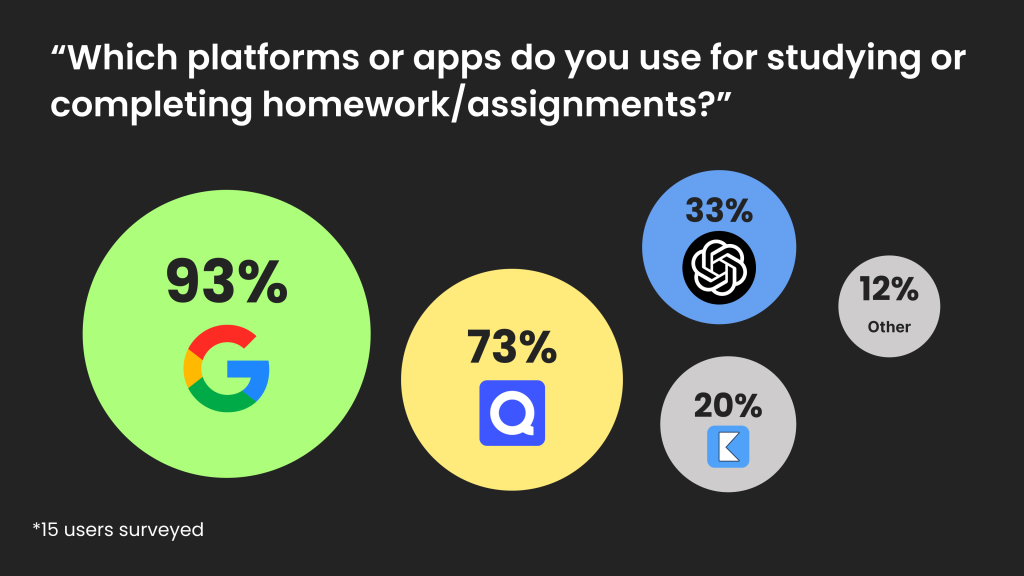
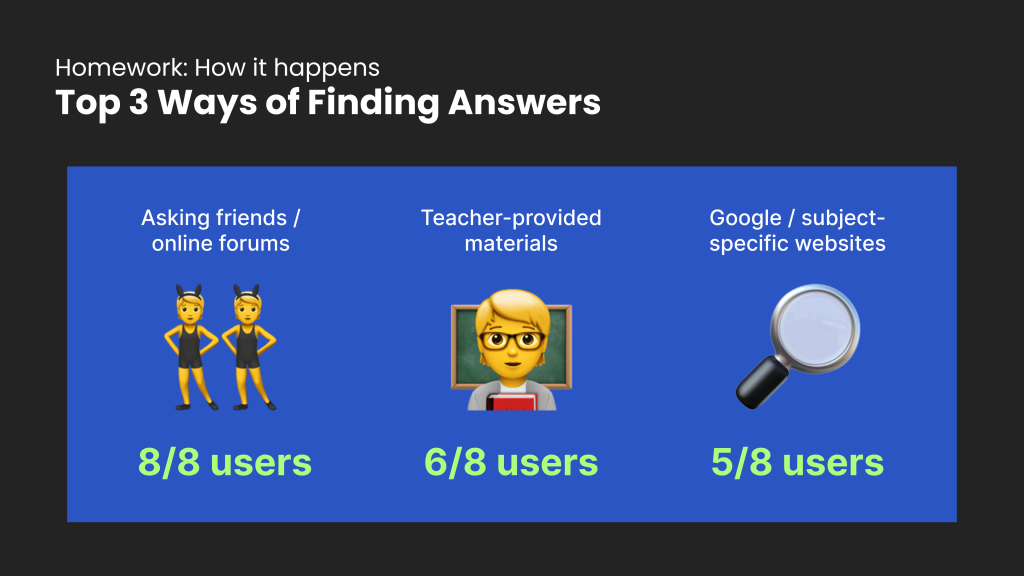
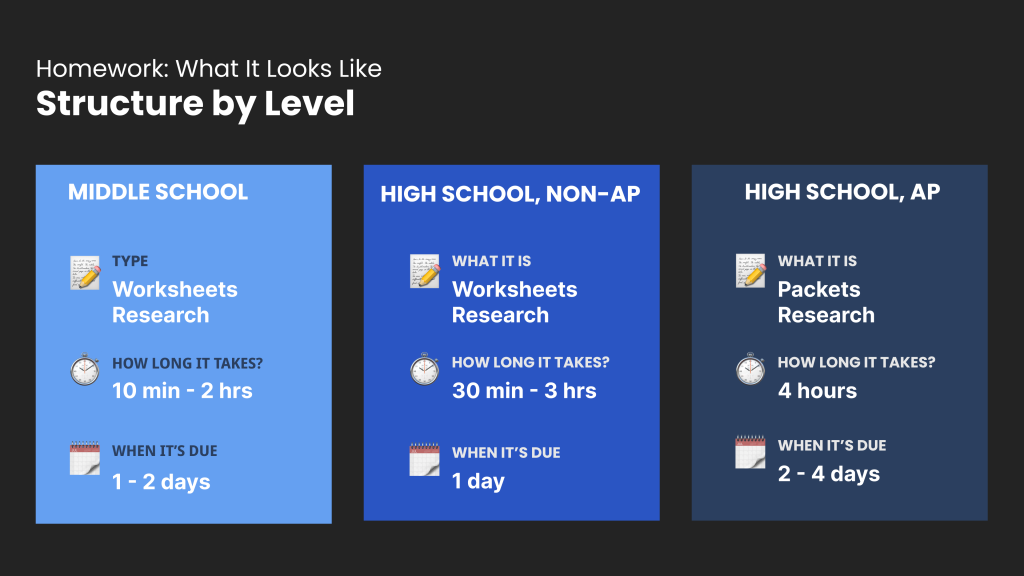
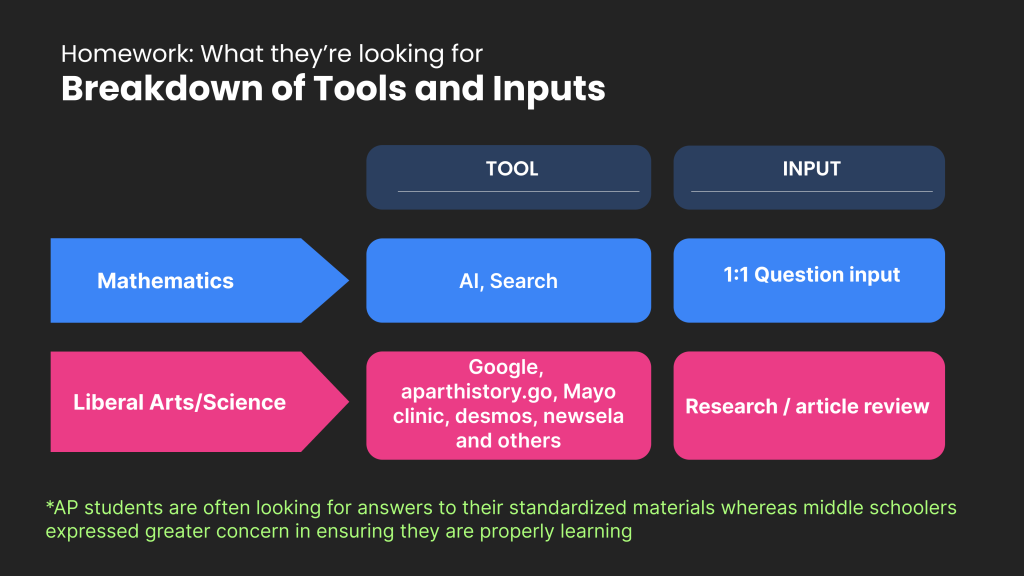
Usability findings

1. 75% of our target users rely on teachers for resources.(6/8 users)
-> Recommendation : Add a “Virtual Classroom” feature to allow teachers to upload content for students and answer questions.
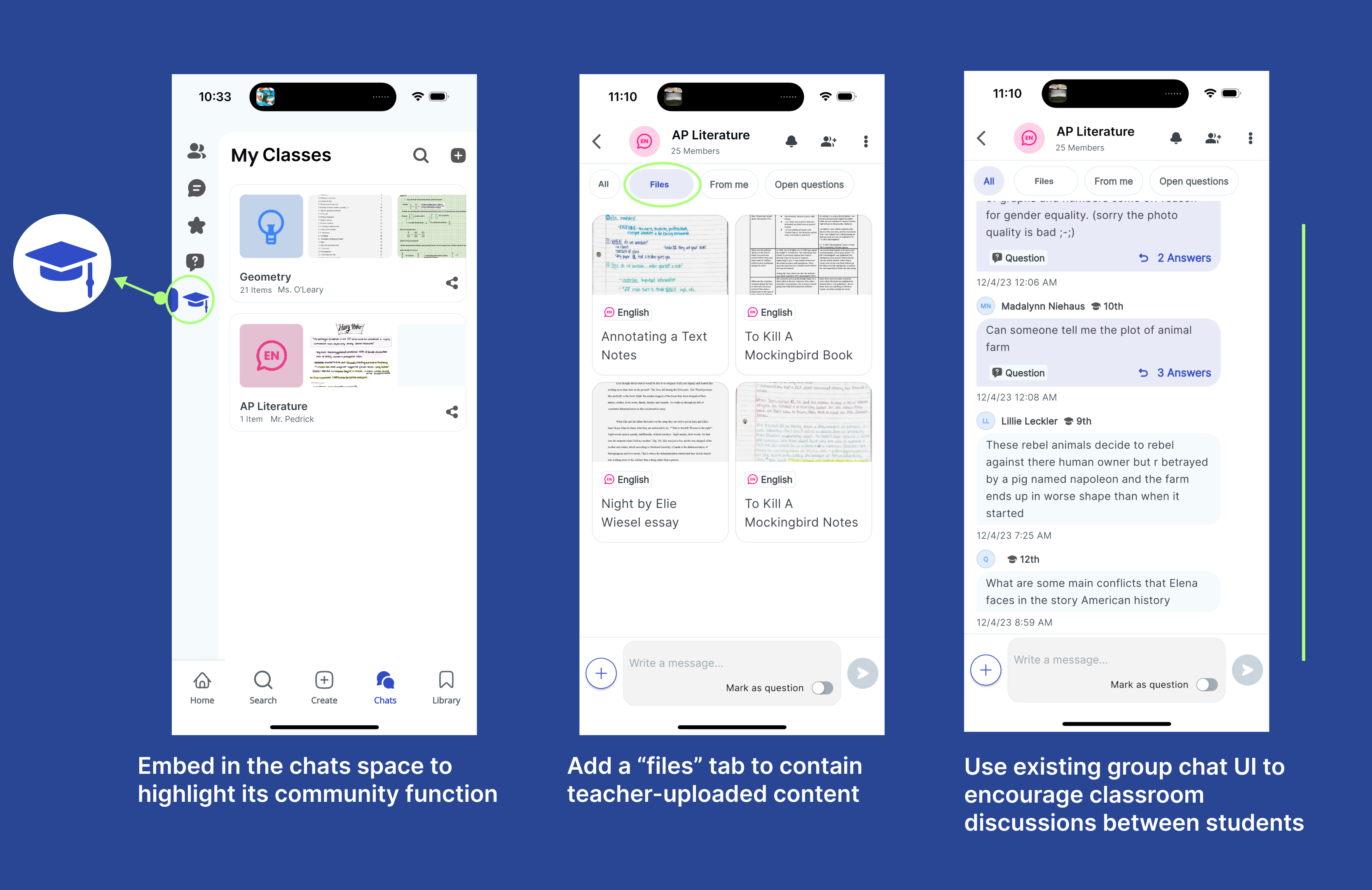
Specifications
- Teachers create groups, students from the same school join
- Uploaded files are shareable across Knowunity
- Chats and discussion are private for students only
- Teacher involvement is minimal they upload content and create groups
- Address localized structure of US education system
2. 100% of our target users don’t think Knowunity is credible for homework. (8/8 users)
-> Recommendation 1: Redesign the search page in a Pinterest-style layout.

-> Recommendation 2: Enhance the search feature by integrating an AI backend system
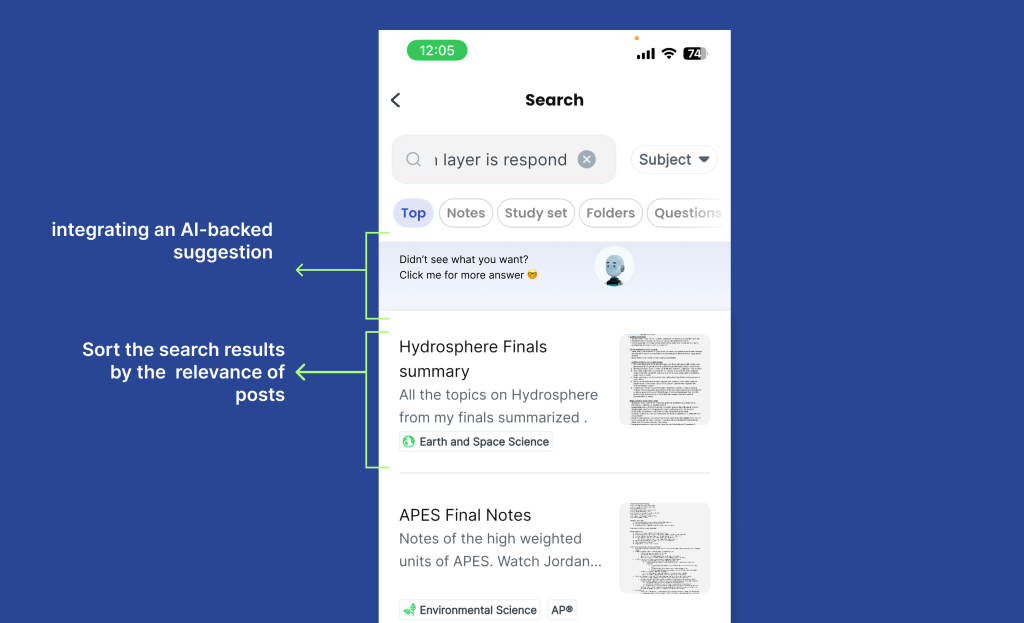
3. Chats lack personalization, resulting in the proliferation of similar topic groups. Absence of clear distinctions for high activity groups. (3/8 users)
-> Recommendation: Introduce labels to categorize users according to their activity levels. Implement sorting orders for group chats based on engagement.
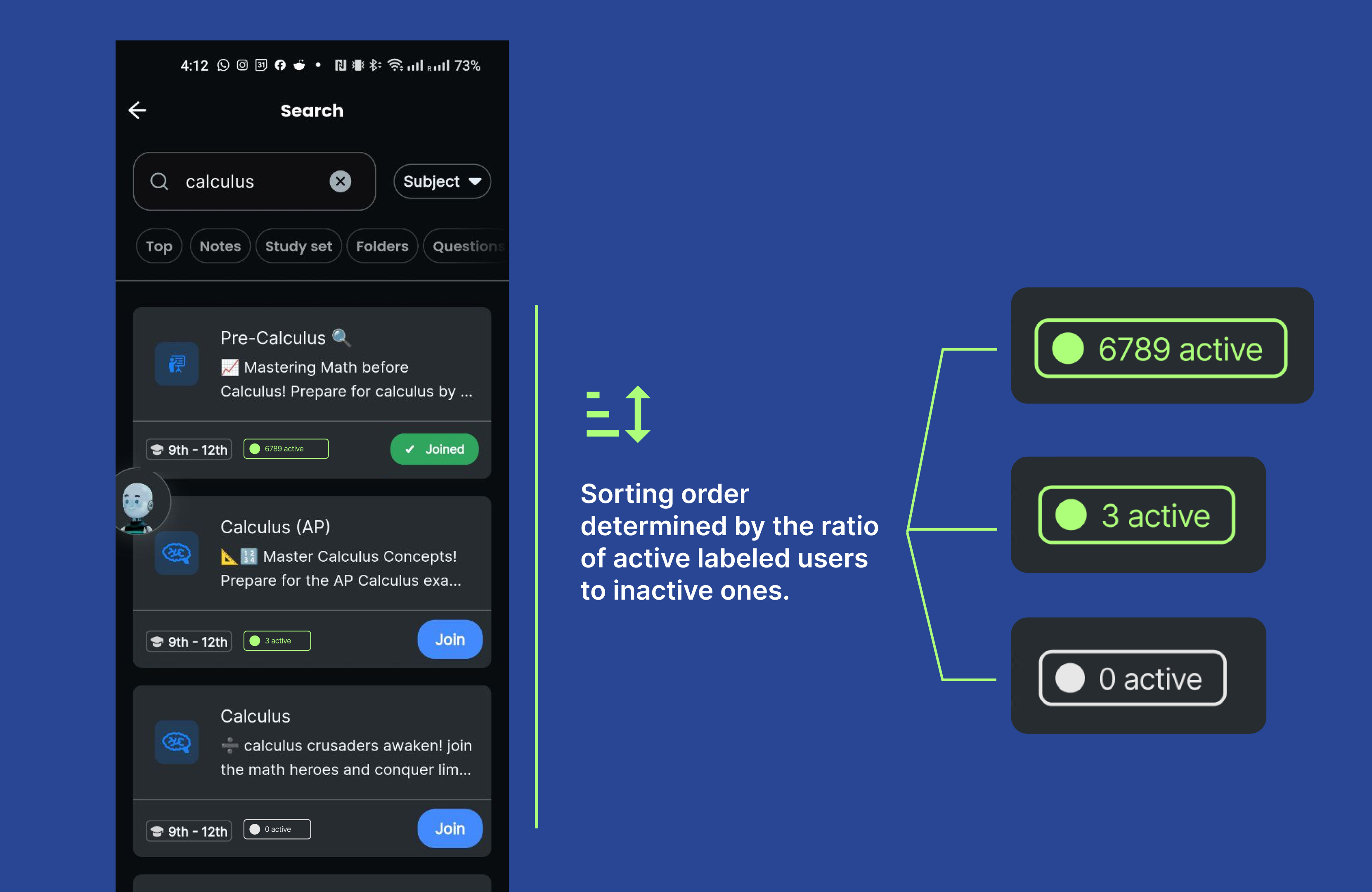
General Observations & Recommendations
1. Improve the accessibility by changing the contrast radio for AI chat-bot to above 4.5:1, which is fail at 3.51:1 now.
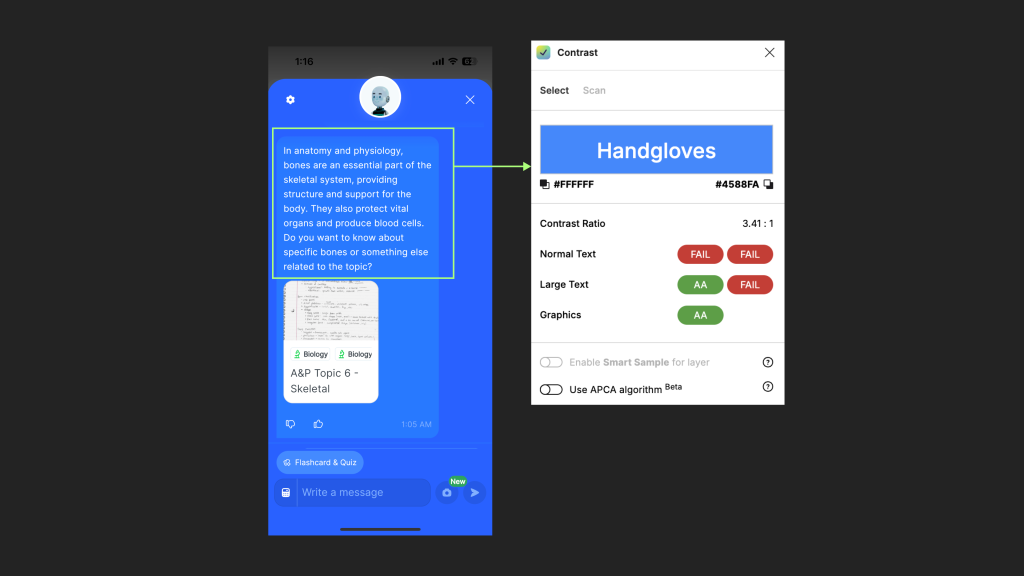
2. User prefer the search button in PDF view for searching keywords within the file, instead of returning to search page.

Takeaways
- I’ve come to understand the importance of carefully choosing a specific target user group and thoroughly exploring their distinct needs.
- Homework Solution Customization: Tailoring the app to address fast, urgent, and specific needs in homework completion is essential. This customization directly impacts user engagement and satisfaction.
- Agile Development Strategies: Acknowledging and adapting to an agile development approach enables quick adjustments to meet evolving user needs. Short-term goals and frequent experimentation foster a flexible and responsive development environment.
- Importance of Usability Testing: Conducting thorough usability testing, including screener surveys and moderated user interviews, is crucial for gathering meaningful data. This process aids in identifying user habits, preferences, and potential pain points.
- Continuous Iteration and Improvement: The case study underscores the need for continuous iteration and improvement based on user feedback. This iterative process contributes to a more refined and user-friendly application.